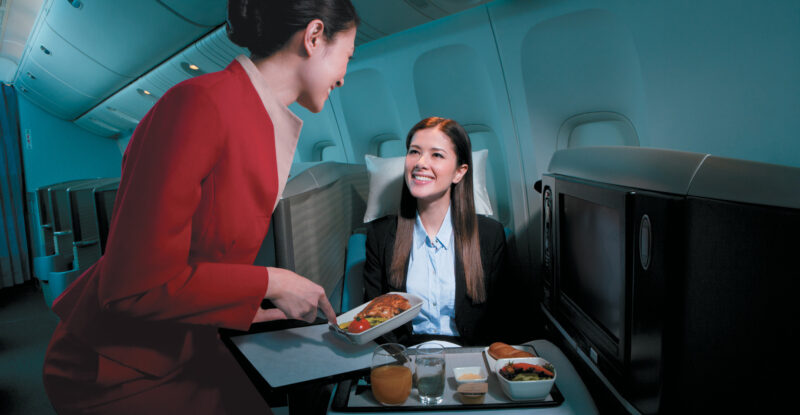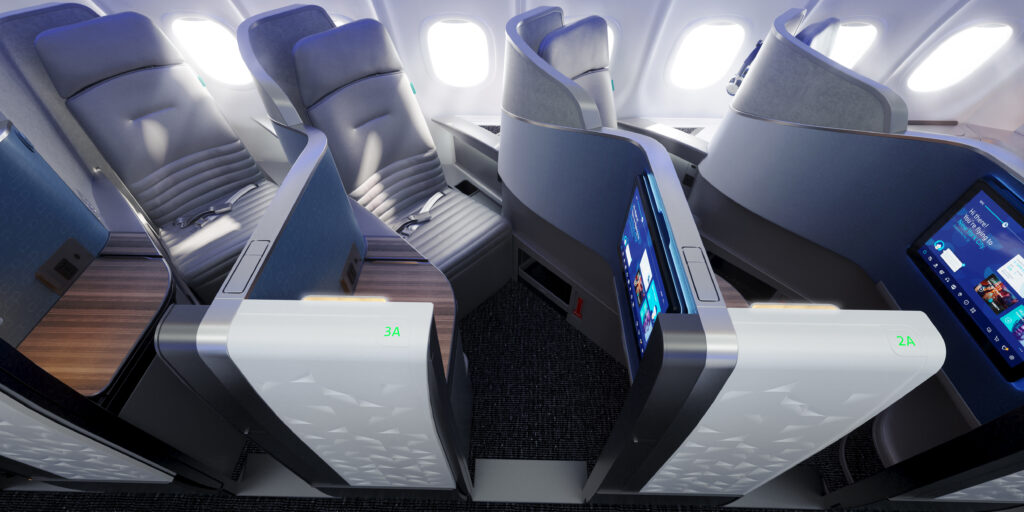 Remember the “coffin class” complaint of the mid-2000s around business class seat sidewalls? It’s back, but now with the newest inward-facing herringbone seats, which airlines are selecting for longhaul narrowbody aircraft like the Airbus A321LR and XLR.
Remember the “coffin class” complaint of the mid-2000s around business class seat sidewalls? It’s back, but now with the newest inward-facing herringbone seats, which airlines are selecting for longhaul narrowbody aircraft like the Airbus A321LR and XLR.
Dialing back the clock, the original criticism only really seemed to arise with the second and third generation inward-facing herringbones, as airlines and seatmakers experimented with enhancing privacy via higher shrouding sidewalls. A classic example is the evolution of this kind of herringbone between the original Virgin Atlantic Upper Class and the seats that followed, notably Cathay Pacific’s.

Virgin Atlantic introduced the concept of this seat with its 2003 Upper Class. Image: Virgin Atlantic
The Cathay seat was the epitome of “coffin class” in this generation, largely because of the vertical sidewalls that extended higher than passengers had been used to before. This issue was magnified in settings where the seats were angled more acutely towards the centreline on smaller widebodies like the A330 and A340. (This angle was also an issue on Virgin’s Airbus fleet, as well as the 787s using the same seat operated by Air New Zealand and Virgin Atlantic.)
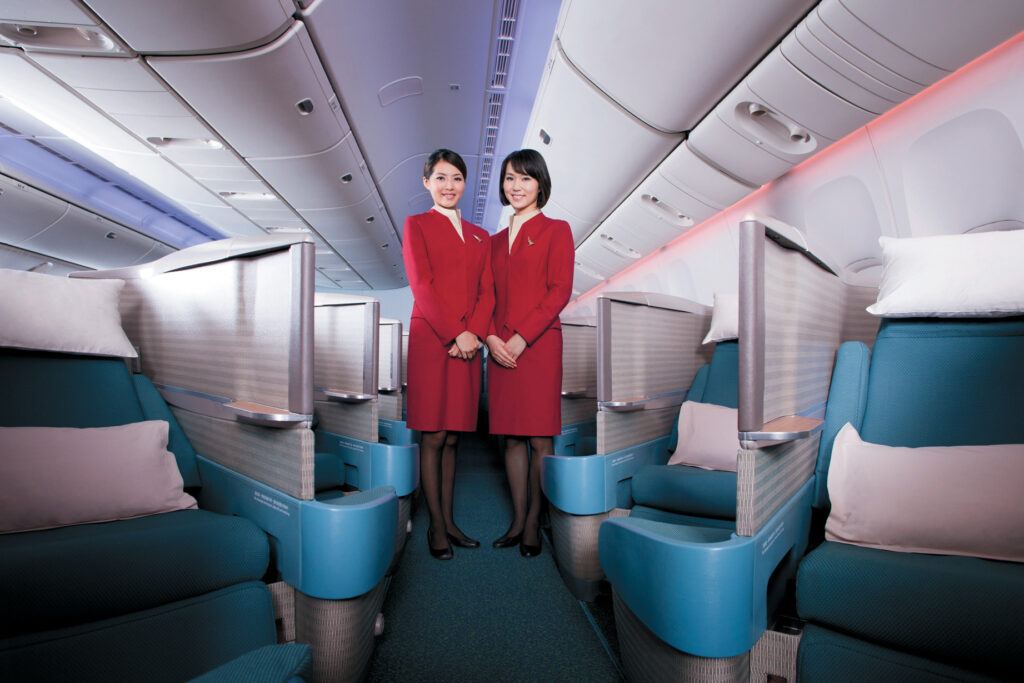
Cathay’s high, straight walls contributed to the coffin class nickname for these seats. Image: Cathay Pacific
Virgin Atlantic attempted to remedy the situation with its early 2010s Dream Suite by using transparent panels halfway down the seat. This was aesthetically pleasing but the seats were ultimately removed for a variety of popularity reasons.
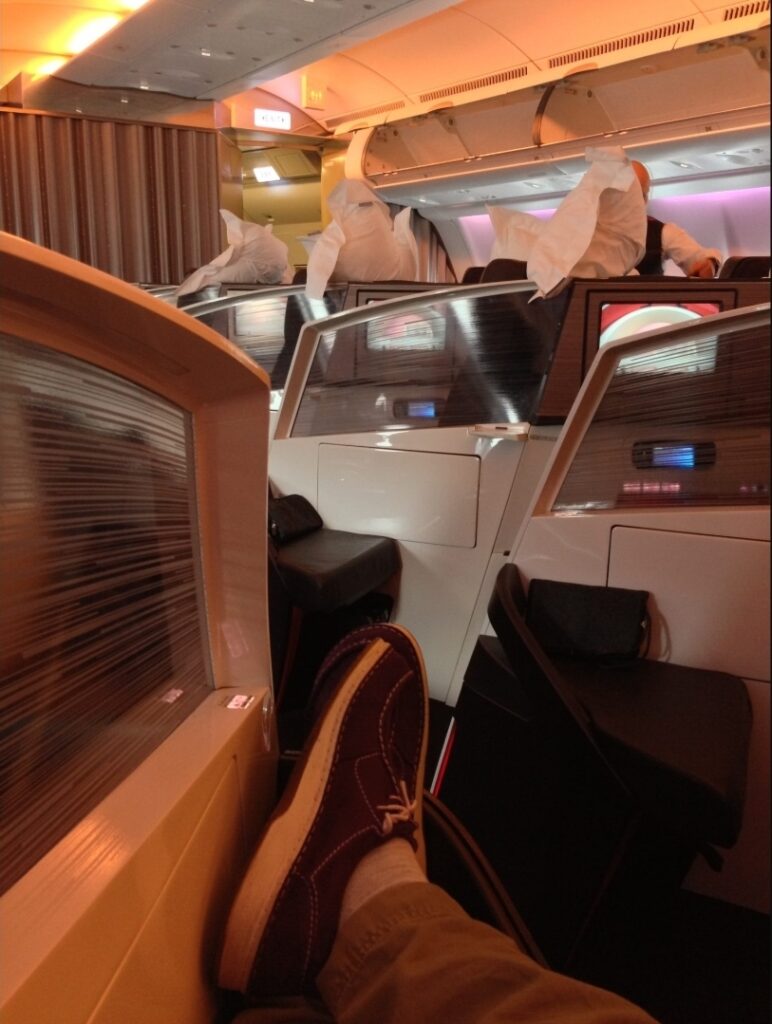
Virgin Atlantic’s Dream Suite used a 3D chamfer and cutout with transparency to increase the feeling of space. Image: John Walton
Back to the present day, where inward-facing herringbones for narrowbodies are now offered by Thompson (as VantageSOLO, first seen as JetBlue’s new Mint products) and Collins (as Aurora, which was unveiled as American’s new business for narrowbodies).
There are three coffin class questions here, two longstanding and one new.
The first longstanding question is about feeling constrained at the shoulders when seated. The issue is that passengers’ shoulders are not always aligned with the roughly triangular shaped space that is next to the sidewall immediately forward of the bed surface. This triangle is also, inherently, only on one side of the seat, reducing the sense of space.
There are solutions, of course. Virgin’s Dream Suite applied a fairly radical 3D wave structure to the seat shrouding, adding space at the shoulders that wasn’t particularly noticeable for neighbours.
The Collins Aurora seatback, meanwhile, is designed to be positioned further to the rear, adding space.
VantageSOLO is designed so that a checkmark-shaped swoosh can be removed from the sidewall at eye level, breaking up the seat’s lines.
The second longstanding question is about feeling constrained in bed mode. Here, the extent to which the sleeping surface is designed to extend onto the triangular space is important, both for back and front sleepers (for shoulders) and for side sleepers (for elbows). Both SOLO and Aurora omit a full triangle sleeping surface for a below-armrest space, so it feels like there is space for innovation here.
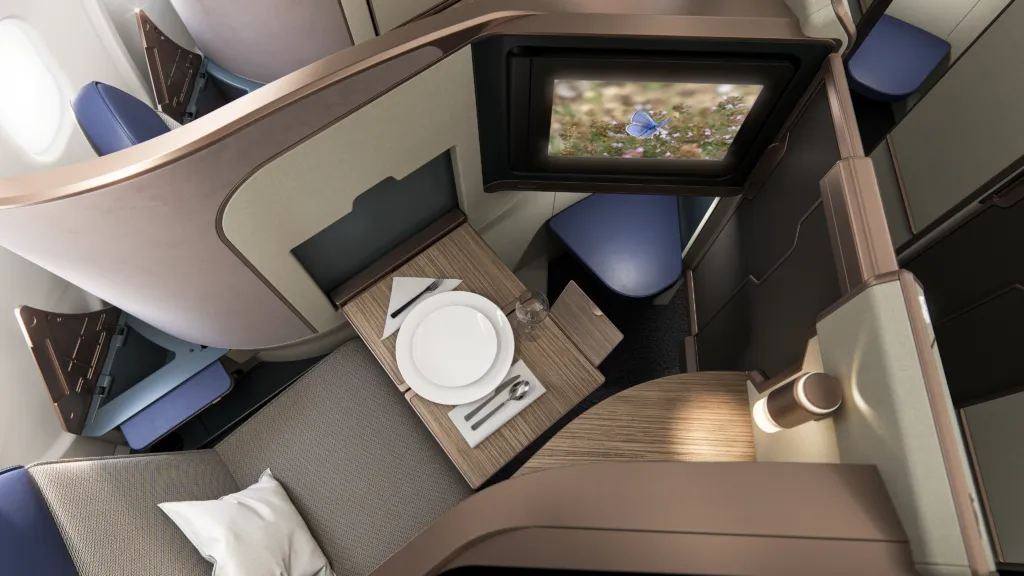
From overhead, the triangular space next to the aircraft sidewall is clearly visible. Image: Collins
The third, and newest, coffin class question is at the door. Both VantageSOLO and Aurora are offered as doored mini-suites to add privacy, which is effective in many ways but also runs the risk of amplifying the coffin class feeling by closing off the space at the feet in a way that the Virgin, Cathay (or indeed previous Delta and Jet Airways seats) did not.
While there is an argument that passengers who feel hemmed-in at the feet can simply leave the doors open, this is only half an answer since the doors extend from a cartridge wall covering, and the wall-mounted swing-out video structure cover about half of the view that would otherwise be unobstructed.
It will be fascinating to see how these seats, the first generation of inward-facing narrowbody herringbones, continue to evolve, how passengers react to their wider introduction, and how seatmakers respond to the challenges.
Related Articles:
- Airbus and Stelia show off new C Suite ultra-compact narrowbody seat
- Collins breaks 45° barrier for side-on Aurora inward herringbone
- Thompson showcases product evolution across Vantage family
- What does a five-star business class seat look like in 2023?
- A premium for business class seats: the narrowbody dilemma
Featured image credited to Cathay Pacific


